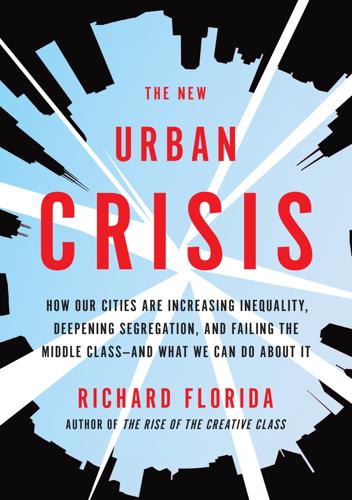
The New Urban Crisis: How Our Cities Are Increasing Inequality, Deepening Segregation, and Failing the Middle Class?and What We Can Do About It
by
Richard Florida
Published 9 May 2016
Others say that the high prices in superstar cities and tech hubs will gradually cause some firms in their key industries to relocate to other, less expensive places, shaping what they refer to as the “rise of the rest.” That would indeed take some of the pressure off the real estate prices. But, as the next chapter will show, there is little evidence that high-tech industries are decentralizing away from superstar cities and tech hubs; if anything, they are becoming even more concentrated in the superstars. Real estate prices provide a clear indicator of the dominant position of superstar cities and the large gap between them and the rest.
…
The companies run by the highest-paid CEOs had the worst overall performance between 2004 and 2014, according to a study of 800 CEOs at 429 corporations.4 Cities have also been caught up in this winner-take-all phenomenon. Just as superstar talent in our economy garners disproportionate rewards, superstar cities tower above the rest. Superstar cities generate the greatest levels of innovation; control and attract the largest shares of global capital and investment; have far greater concentrations of leading-edge companies in the finance, media, entertainment, and high-tech industries; and are home to a disproportionate share of the world’s talent.
…
It’s a powerful, ongoing feedback loop that compounds the advantages of these cities over time.5 The gap between these superstar cities and other cities around the world—from the older, stagnating industrial cities of the United States and Europe to the impoverished and economically disconnected cities of the Global South—is enormous, and it is growing. But just which cities make up the ranks of the world’s superstars? There are many rankings of global cities, each capturing particular dimensions, such as economic strength, competiveness, or livability. A comprehensive assessment can be created by combining these analyses. To do so, my team and I developed an overall Superstar City Index, putting together five key rankings.6 We calculated a city’s final score by awarding ten points to a first-place ranking, nine points to a second-place ranking, and so on.

Who's Your City?: How the Creative Economy Is Making Where to Live the Most Important Decision of Your Life
by
Richard Florida
Published 28 Jun 2009
When the list was narrowed to even more specific factors, access to work came in first, crime and security second, and access to airports third, well ahead of social networks, taxes, educational institutions, and leisure activities.3 Star Struck Using long-term trends in housing prices as their gauge, Wharton real estate expert Joseph Gyourko and his colleagues Todd Sinai and Chris Mayer of Columbia University identified the rise of what they call “superstar cities” (comprising central cities and their suburbs) across North America.4 According to Gyourko and his collaborators, the dramatic real estate appreciation in superstar cities is a long-term trend. In the short run, real estate prices in superstar cities experience significant ups and downs, but over time they will consistently appreciate in value. But some may ask, What about a place like Las Vegas, which has witnessed dramatic population growth—at or near 50 percent—in four of the past five decades?
…
It’s a mistake to equate population growth with superstar status, Gyourko says, unless it’s accompanied by a significant rise in housing prices. As for Las Vegas, he adds, given its relatively low price appreciation and falling housing prices, most anyone who would like to live there can. The price many people are willing to pay to live in this small set of superstar cities says something powerful about their economic importance. Of course, housing markets fluctuate and bubbles burst, but superstar cities possess a remarkable staying power that dates back at least half a century. They are, Gyourko says, “by their nature exclusionary—and due to the prices they command, residents have to pay a significant financial premium to live there.”
…
With the rise of a spiky world organized around a relatively small number of global megaregions, we may be entering a new phase in real estate in which the housing market splits into globally oriented centers where prices rise considerably over time and local ones where prices are stable or, in some cases, decline. However, not all economists think that high real estate prices in superstar cities are here to stay. Among those who see this trend ending is Yale economist Robert Shiller, author of the best-selling Irrational Exuberance, which predicted the collapse of tech stocks in the early 2000s. In a May 2007 op-ed, Shiller asked, “Why should home values in glamour cities increase forever?” 5 To be sure, there is no way to increase the size of superstar cities like New York or London. But “in every case,” Shiller writes, “there are vast amounts of land where a new city could be started,” as has been done time and time again in the past.
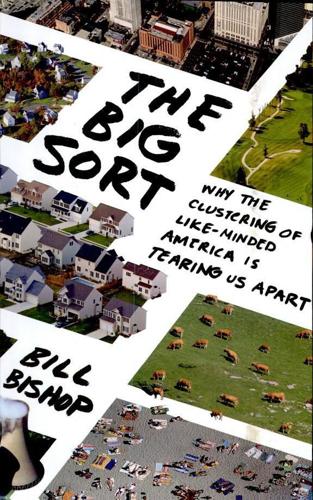
The Big Sort: Why the Clustering of Like-Minded America Is Tearing Us Apart
by
Bill Bishop
and
Robert G. Cushing
Published 6 May 2008
Glaeser and Gottlieb, "Urban Resurgence and the Consumer City," pp. 13–15. 53. Joseph Gyourko, Christopher Mayer, and Todd Sinai, "Superstar Cities" (National Bureau of Economic Research Working Paper No. 12355, July 2006). 54. Glaeser and Gottlieb, "Urban Resurgence and the Consumer City." 55. Richard Florida, "Cities and the Creative Class," City and Community, March 2003, pp. 3–19. 56. Terry Nichols Clark, The City as Entertainment Machine (Oxford: Elsevier, 2004). 57. Gyourko, Mayer, and Sinai, "Superstar Cities," p. 2. 58. Data collected by the Bus Project in Portland, Oregon, and provided to the author. 7.
…
"Like a gas, entrepreneurship is hotter when compressed."47 The busting of the tech bubble in the early 2000s slowed the growth in these cities, but only temporarily. By early 2007, demographer William Frey was telling a "tale of two kinds of cities." Those producing patents and technology were expanding again; the older cities that made things—Buffalo, Cleveland, Toledo, Detroit—were reporting continuing declines.48 The Rise of the Superstar Cities People migrate to maximize their economic returns. At least that's been the most common explanation for why people move. They pull up stakes to make or save money. Economic utility seemed to be motivating both employers and workers in the 1970s; then, big-city businesses were paying higher wages to keep and attract workers.
…
In 1940, for example, the average house in Cincinnati cost more than a home in San Francisco. Over the next sixty years, the price of a Cincinnati house increased from $65,000 to $145,000. The total population of San Francisco had changed little in that time, but the average house price rose by a factor of nine, from $60,162 to nearly $550,000. Gyourko dubbed these places "superstar cities," metro areas where residence had become, in essence, a luxury good.53 People paid for the privilege of being in cities such as San Francisco, Seattle, San Jose, Portland, Los Angeles, New York, Austin, and Raleigh-Durham because they wanted to live there, not because they expected an economic return.

Age of the City: Why Our Future Will Be Won or Lost Together
by
Ian Goldin
and
Tom Lee-Devlin
Published 21 Jun 2023
Economists Enrico Berkes and Ruben Gaetani analysed the references cited in patent filings in the US between 2002 and 2014, and found that densely populated areas in the US were far more likely to produce patents based on ‘unconventional combinations of prior knowledge’.26 Given the importance of intellectual property in many of the industries driving economic growth in rich countries today, it is unsurprising companies are drawn towards those superstar cities where they are more likely to be able to absorb cutting-edge ideas. A third reason for the growth of superstar cities in recent decades is the growth of superstar firms. The benefits of scale for firms are stronger than ever in today’s knowledge economy. US companies with revenues in excess of $10 billion generate a return on equity that is nearly four times the rate generated by firms with revenues less than $1 billion, up from 1.2 times in the 1980s.27 Part of this is the rapid growth in industries like social media that exhibit ‘network effects’, where the value of a service to users increases with the number of other users, creating a natural tendency towards a single dominant player.
…
Superstar Dynamics In 1890, the economist Alfred Marshall coined the term ‘economies of agglomeration’ to describe the benefits to companies from locating near to one another.24 Marshall identified that access to labour with the right skills, proximity to suppliers, and the informal transfer of knowledge across companies could explain the geographic clustering of industries such as textiles in Manchester or metalworks in Sheffield. In subsequent knowledge-based economies, these forces have become even more significant, giving rise to a number of ‘superstar’ cities, including San Francisco, New York, London, Paris and Shanghai. These cities have captured the lion’s share of economic growth in recent decades. The first reason for the emergence of these superstars is talent clustering. It was relatively straightforward to train up a worker to perform the manual tasks that once characterized most manufacturing activity, compared to the biomedical scientists, software developers and financial engineers that are critical to today’s economy.
…
And what might be beneficial in the short term can undermine dynamism and productivity in the medium term, as monopolistic firms lose the incentive to keep innovating.28 There is already worrying evidence of this occurring – in 2011 spending by Apple and Google on patent litigation and purchasing overtook spending on research and development.29 The increasing consolidation of industries and domination of a growing number of sectors by superstar firms has bolstered the rise of superstar cities. In 1980, St Louis was home to 23 Fortune 500 companies. Today, that figure is down to eight.30 While some of these businesses simply failed, others were acquired in the waves of industry consolidation that have swept across the US. Local aerospace firm McDonnell Douglas was acquired by Boeing in 1997.

The Warhol Economy
by
Elizabeth Currid-Halkett
Published 15 Jan 2020
So long to the bygone days of bohemian artists relying on their ingenuity alone—these days most successful creative workers have a degree in hand from a prestigious university before they walk in the door of their first gallery opening or fashion internship. Couple that with the exorbitant rise in cost-of-living in the world’s leading cities—particularly those known as global cultural capitals. These “superstar cities,” as the economists Joseph Gyourko, Christopher Mayer, and Todd Sinai have dubbed them, have become increasingly homogenized as the only influx of new human capital allowed in is that which can pay the rent—thus leaving out much of the new guard of cultural producers that further perpetuate New York’s (and Los Angeles’ and London’s) creative economy.33 Policy and development initiatives directed toward art and culture must take into account both how cultural economies work (redirecting carpet-bombing-style policy to something more nuanced) and the increasing economic and social constraints imposed on contemporary creative workers.
…
Steinhauer 2005. 24. Ibid. 25. Pogrebin 2007a. 26. Ibid. 27. Silver, Clark, and Rothfield 2005. 28. Ibid. 29. Center for an Urban Future 2005. 30. Morgan 2005. 31. Ibid. 32. Center for an Urban Future 2003. 33. Please see Gyourko et al. 2006 for a complete discussion and analysis of the superstar cities concept in United States metropolitan areas. 34. Rollins 2006. 35. Waxman 2006. 36. Steinhauer 2005. 37. Fried 2006. 38. Rabin and Rasiej 2004. 39. Ibid. 40. A&R refers to the department within a music record label that is responsible for scouting, creating, and developing new artists and music groups. 41.
…
Economic Action and Social Structure: The Problem of Embeddedness. American Journal of Sociology 81, 3: 481–510. Green, Nancy. (1997). Ready-to-Wear, Ready-to-Work: A Century of Industry and Immigrants in Paris and New York. Durham: Duke University Press. Gyourko Joseph, Christopher Mayer, and Todd Sinai. (2006). Superstar Cities. National Bureau of Economic Research Working Paper. Hager, Steven. (1986). Art After Midnight: The East Village Scene. New York: St. Martin’s Press. Halbfinger, David. (2005). California Considers Tax Breaks for Filming. New York Times, August 18 Hall, Peter. (1985). “The Geography of the Fifth Kondratieff.”

One Billion Americans: The Case for Thinking Bigger
by
Matthew Yglesias
Published 14 Sep 2020
One often hears that economic activity has become more concentrated in a handful of “superstar” cities. But as Jed Kolko, an economist specializing in urban labor markets who now works for the job site Indeed, has shown, this is a mistake. What’s happening is that average incomes are becoming more unequal as superstar cities pull away from the pack. But because the superstar cities are growing so much slower than the power sun belt boomtowns, their share of overall national output isn’t actually growing. We have essentially two growth models. The superstar cities attract skilled workers from all around the country (and, indeed, the world) but then eject working-class residents due to housing scarcity.

The London Problem: What Britain Gets Wrong About Its Capital City
by
Jack Brown
Published 14 Jul 2021
Other world cities also punch way above their economic weight and generate resentment at home.57 Greg Clark and Tim Moonen observe that some of these accusations – that such cities get more than their fair share of national resources, that they cause domestic ‘brain drain’ and exert too much influence on national governments – are often hotly disputed, but ‘what is clear is that these concerns pose a major challenge to the viability of the world city model.’58 The urbanist Richard Florida connects this situation directly to major political events in the mid-2010s: The divides separating global superstar cities from the rest of their own countries are exactly what resulted in the voting swings towards Brexit and Trump. Superstar cities, in effect, form a league of their own, often having more in common with each other than they do with cities across their own nations.59 Clark and Moonen pick up a similar theme. They observe how political leaders around the world have become increasingly uncertain of how to support their cities amid a reactionary rise in nationalism, separatism, and anti-immigration feeling.60 Urban–rural divides have been shaping politics in recent years from Italy to Israel, Turkey to Thailand,61 and these forces have played a part in several geographically divided elections across the globe.
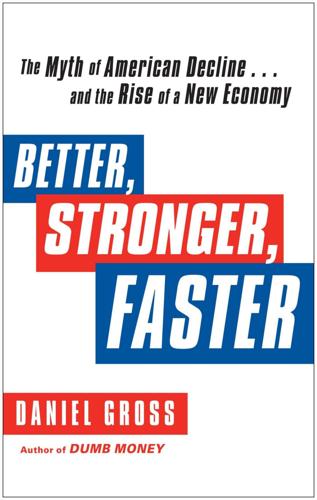
Better, Stronger, Faster: The Myth of American Decline . . . And the Rise of a New Economy
by
Daniel Gross
Published 7 May 2012
With mortgages underwater, people in Southern California’s Imperial Valley, where the unemployment rate was 30 percent in July 2011, can’t easily sell their homes and move to North Dakota, where jobs are plentiful. The “superstar cities” thesis, advanced by Christopher Mayer of Columbia University and Joseph Gyourko and Todd Sinai of the University of Pennsylvania, explains why real estate values in certain cities around the world have held up well. Superstar cities have lots of people, big industries, and limited land and zoning regulations that help stop massive development. Crucially, they also have big transportation networks that bind residents together.
…
article_id=35036; for Google’s solar-powered parking structures, see http://pluginbay area.org/fileadmin/materials/zero_emissions/EV_and_PHEV/Solar_Fuel_Station_Brochure.pdf. 8. On Governor Christie’s rejecting tunnel funds, see http://www.cnn.com/2010/US/10/07/new.jersey.tunnel.project/; the Regional Plan Association’s study can be seen at http://www.rpa.org/2010/07/arc-to-raise-home-values-by-18-billion.html. 9. The “superstar cities” paper can be seen at http://papers.ssrn.com/sol3/papers.cfm?abstract_id=921741; Dana Rubinstein, “Rail Stations Drive Demand,” Wall Street Journal, June 13, 2011. Conclusion. The Myth of American Decline 1. Data on home starts are available at the U.S. Census residential construction site, http://www.census.gov/construction/nrc/; data on home sales volume are from www.realtor.org. 2.
…
R., 19 Reinhart, Carmen, 5, 17 Reliance Energy, 86 Religare Enterprises, 86–87 rents, renting, 94, 119, 226 efficiency economy and, 69–71 efficient consumers and, 189–91, 193–95 restructuring and, 47, 50, 55 supersizing and, 203–4, 212–13 of textbooks, 193, 195, 204 Rent the Runway, 194–95 Republicans, 5–6, 31, 205, 218, 221 reshoring and insourcing, 222 and employment, 163, 167–79 and immigrants, 176–77 of manufacturing, 164–78 and restructuring, 173–74 and services, 171–72, 174 restructuring, 23, 44–60, 80–81 automakers and, 46, 51–52, 78, 136, 173–74 consumers and, 44–45, 53–59 corporations and, 44–45, 47–49, 52–53, 57–58, 81, 166 personal, 44–45, 53–54 real estate and, 45, 49–51 and reshoring and insourcing, 173–74 retailers, retailing, 21, 75, 110–11, 125, 227 efficient consumer and, 188, 193–94 FDI and, 92–93, 95 inports and, 134–35, 140–41, 144 and reshoring and insourcing, 170, 176–77 restructuring and, 52–53, 55–57 supersizing and, 200, 203, 208 Revolutionary War, 81–82 Rhodium Group, 94 Robinson, Carl, 111 Rocky Mountain Institute, 70 Rogoff, Kenneth, 5, 17 Romney, Mitt, 50–51, 54–55, 182 Roosevelt, Franklin D., 12–15, 206 Roth, Philip, 127 Roubini, Nouriel, 4 Royal Bank of Scotland (RBS), 38–39 Royal Dutch Shell, 86 Rubinstein, Dana, 212 Rushdie, Salman, 127 Russian Federation, 19, 100, 168 exports and, 112, 129 FDI and, 84–85 inports and, 137–38, 144 Rybolovlev, Dmitry, 85 Sadove, Steve, 125 Saks Inc., 125 sales, 2, 21, 119, 163 efficiency economy and, 65–68, 74–76, 79 efficient consumers and, 183, 194 exports and, 98, 106, 108, 111–13, 116–17, 128, 226 FDI and, 83, 89, 92–93 inports and, 131–33, 135, 138, 140–43, 146 North Dakota and, 154–55, 157 and reshoring and insourcing, 170, 173, 177 restructuring and, 53–54, 56 supersizing and, 203–4, 210 San Francisco, Calif., 86, 122, 192, 211 San Joaquin Valley, 79 Sarkozy, Nicolas, 3 Saudi Arabia, 100, 102 exports and, 108–9, 112–13, 118, 125 Sauvant, Karl, 94 savings, saving, 141 efficiency economy and, 65–66, 68, 72, 74, 76–77 efficient consumers and, 181–82, 184–89, 193, 195 recovery and, 21, 215 restructuring and, 45, 54, 56 savings and loans industry, 43 Scale and Scope (Chandler), 206 Schiff, Peter, 4 Schramm Inc., 108 Schutt, Stephen, 115, 119–20 Schwarzman, Stephen, 26, 198 scrap metal, 107 Seagram, 129 Seltzer, Greg, 126 services: efficiency economy and, 62, 64 efficient consumers and, 181–82, 184, 187, 189, 194–96 employment and, 9, 83, 163–64 exports and, 98–99, 115–16, 126, 131, 169 inports and, 131–32, 141, 143–44 North Dakota and, 149–50, 160 and reshoring and insourcing, 171–72, 174 supersizing and, 199–202, 204, 206, 208 U.S. economic importance and, 227–28 Sex and the City, 144–45 Shanghai, 7, 120, 135–36, 138, 140–44 Sinai, Todd, 212 Siretsanou, Val and Vitaly, 187–88 Sirkin, Harold L., 167 Sisson, Francis, 13 Six Million Dollar Man, 15 Slim Helú, Carlos, 85 socialists, socialism, 5, 12–14, 25, 117 solar energy, 7, 26, 178, 211, 225 efficiency economy and, 64–65, 67, 70, 80 solar pool covers, 186–87 Souki, Charif, 106 soybeans, 101, 158 Spelling, Aaron, 84 Spence, Michael, 10, 100 Standard & Poor’s (S&P), 46, 58 500 index of, 132–33, 137 on U.S. credit rating, 1, 11 Starbucks, 90, 123, 132, 160, 181 inports and, 139–41 State Department, U.S., 120, 125 Steinberg, Jacques, 119 Steinmetz, Juergen T., 124 Stiglitz, Joseph, 6, 9 stimulus, 23, 57, 81 economic decline and, 5–6 infrastructure and, 209–10, 212 timely policy decisions and, 28, 30–32 stocks, stock markets, 1–2, 7–8, 12–13, 15–18, 109, 180, 185 capitalization of, 22, 25, 198–99, 204 declines and collapse of, 18, 56, 81, 171 inports and, 133, 136, 147 Internet and, 15, 21–22, 82 restructuring and, 51–52 timely policy decisions and, 35, 37–38, 42–43 Stoffel, Bob, 77 stress tests, 37 Subaru, 173 Subramanian, Arvind, 8 subways, 212–13 suicides, 8 Summers, Lawrence, 3–4, 10, 26 infrastructure and, 205, 208 Super Cool Biz campaign, 9, 60–61 Super Girl, 20 supersizing, 199–214, 216 ability to scale in, 204, 207–8, 214 Apple and, 199–201 employment and, 199–201, 203–7, 209–11 infrastructure and, 202–14 networks and, 199, 201–4, 206–9, 211–13 superstar cities thesis, 212–13 Swift, Earl, 207 Syria, 227 Taphandles, 177–78 Target, 58, 177 Tata, Ranan, 117 Tata Consultancy Services, 172 taxes, taxpayers, 46, 83, 109, 175, 212 on carbon, 61, 75, 103–4, 217 on corporations, 146–47, 163 cutting of, 10, 30–31, 150, 157, 181, 218, 221–22 economic policy proposals and, 217–18 efficiency economy and, 61, 75 efficient consumers and, 181, 191 employment and, 163, 166 infrastructure and, 205, 208 inports and, 133, 136–37, 146–47 North Dakota and, 150, 152, 157 timely policy decisions and, 30–36, 38–42 Taylor, Frederick Winslow, 61 TD Bank, 92 technology, 3, 7–8, 10, 14–15, 48–49, 96, 104, 108, 121–22, 164, 170, 195, 211 efficiency economy and, 77, 79–80 efficient consumers and, 184, 192 FDI and, 84, 86 North Dakota and, 151, 160 telegraph, 206, 209, 214 Temporary Liquidity Guarantee Program (TLGP), 34 Term Asset-Backed Securities Loan Facility (TALF), 34, 48 Terminator, The, 134 Tesla, 79 Texas, 5, 86, 118, 141–42, 206 Barnett Shale in, 79, 151 Thain, John, 48 This Time Is Different (Rogoff and Reinhart), 5, 17 Three Gorges, Three Gorges Dam, 7, 202 timely policy decisions, 28–44, 60, 80 auto industry and, 33, 40–43 bailouts and, 28, 31–43 banks and, 32–34, 36–40, 43 housing and, 29, 32, 34–35, 42–43, 54–55 restructuring and, 44, 58–59 stimulus and, 28, 30–32 TARP and, 36–38, 40 TMD Friction Group, 88 Tokyo, 8–9, 29, 67, 138, 168 Super Cool Biz campaign in, 9, 60–61 Toledo, Allan, 95 total quality management, 61–62 tourism, 82, 208, 215 exports and, 116, 121–26, 164 inports and, 132, 137–38, 144–45 medical, 125–26, 145 retrofitting Empire State Building and, 69, 71–72 Toyota, 79, 87 Toys“R”Us, 141 trade, 3, 14, 19, 22, 24, 26, 94, 106, 152 deficits in, 102, 107, 168, 221–22 surpluses in, 101, 122 see also exports Transformers, 129 transportation, 72, 101, 105, 167, 169, 224, 226 efficiency economy and, 76, 158, 223 North Dakota and, 152, 158 supersizing and, 205, 208, 210–13 see also autos, automakers Transportation Department, NYC, 192–93 Treasury Department, U.S., 21, 26, 47, 133, 218 TARP and, 37–38, 54 timely policy decisions and, 32–38, 42 Troubled Asset Relief Program (TARP), 47, 54 bailouts and, 36–38, 40–42 Trust Bank, 129 Tsongas, Paul, 14 Tung Chee Hwa, 22 Turkey, 26, 71, 117, 123, 126, 129 inports and, 132, 139 Twitter, 204, 227 U.K.
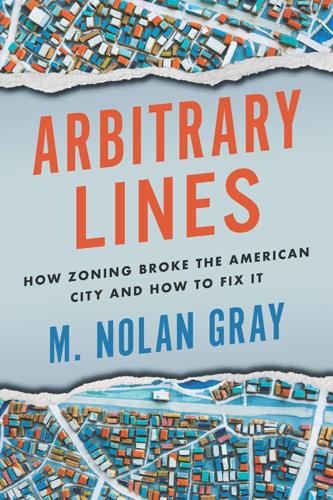
Arbitrary Lines: How Zoning Broke the American City and How to Fix It
by
M. Nolan Gray
Published 20 Jun 2022
They provide a platform for individuals to experiment and innovate, nursing the young firms that go on to remake the American economy every few decades. To the extent that zoning has made it exponentially more difficult for Americans to move to these hubs of activity—for a software engineer to relocate to San Jose, or for a medical researcher to relocate to Boston—we are all poorer as a result. Even beyond so-called “superstar cities,” zoning shapes American life in many subtle but nefarious ways. As the Black Lives Matter movement has thrown into stark relief, America still has a long way to go in providing equal opportunity for all. And yet, few American cities recognize the fact that their zoning codes were drafted with the express intention of instituting strict racial and economic segregation.
…
Where these institutions fail, a robust set of impact regulations for new development and a civil service committed to managing—rather than stalling—growth would do a far better job than zoning at keeping neighbors happy and quality of life up. Now is the time to rediscover these lost traditions and start planning for what comes after zoning. This isn’t to say that an urban utopia lies on the other side of zoning. Housing will always be slightly more expensive in superstar cities. There will always be considerations besides the cost of living that keep folks from moving to thriving cities. Healing the scars of racism and classism will take decades, if not centuries. And national action—better yet, international action—is needed to address issues like climate change. Indeed, zoning isn’t even the only policy that stands in the way of better cities.
…
While clusters may rebuild themselves in areas where housing is cheaper—be it tech in Austin and Denver or finance in Dallas and Charlotte—these clusters take decades to emerge, with a lot of potential productivity and innovation lost in the interim. Worse yet, what happens when these cities, which are all subject to zoning, run out of vacant land and become just as expensive as today’s superstar cities? 11. Adam B. Jaffee, Manuel Trajtenberg, and Rebecca Henderson, “Geographic Localization of Knowledge Spillovers as Evinced by Patent Citations,” Quarterly Journal of Economics 108, no. 3 (August 1993); Hyuk-Soo Kwon, Jihonh Lee, and Sokbae Lee, “Knowledge Spillovers and Patent Citations: Trends in Geographic Localization, 1976–2015,” Economics of Innovation and New Technology (2020). 12.
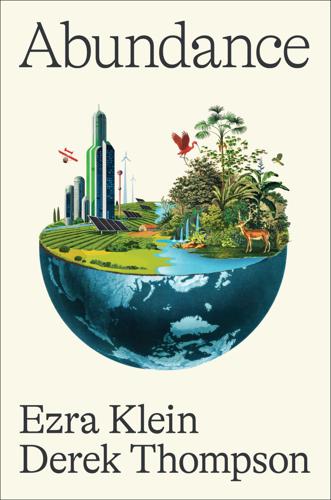
Abundance
by
Ezra Klein
and
Derek Thompson
Published 18 Mar 2025
The US has only about 425.6 Where did all the houses go? The answer is that they were never built at all. The result is a housing crisis of staggering proportions. Almost 30 percent of American adults are “house poor”—spending 30 percent or more of their income on housing.7 But that understates the problem. Housing costs are highest in the superstar cities that now drive the economy. Millions endure multi-hour commutes, or far worse jobs, in order to live in a far-flung city where they can afford a home. These choices are missed in raw estimates of affordability, but they are a drag on the economy and an anchor on people’s lives.8 To immerse yourself in analyses of American housing is to drown in data.
…
Some thought that the dislocations of the pandemic, combined with the rise of videoconferencing, would finally sever the link between place and innovation. It’s undeniable that white-collar employees are more likely to work remotely, and some have used this opportunity to move to smaller and cheaper cities while clocking in for firms based many miles away. But America’s superstar cities still draw many of the country’s most talented workers. While remote and hybrid work have stabilized at a much higher level than before COVID, it is notable that in August 2023, the videoconferencing company Zoom announced that they were demanding employees be in the office at least a few days each week.
…
This tracks the broader difference between the two cities: in Houston, the median home costs a bit over $300,000 rather than a bit over $1.7 million in San Francisco.13 Houston is not free of affordability problems. But it is not facing the crises of homelessness and housing affordability seen in the superstar cities of many blue states. Liberals lament that private developers want to build profitable developments when what is needed most is affordable housing. But even aside from how much housing is built, one way to make housing more affordable is to make it cheaper to build. The problem is many liberal jurisdictions have layered on rules and regulations that make housing pricier even when it is constructed—and that, of course, makes it less affordable.
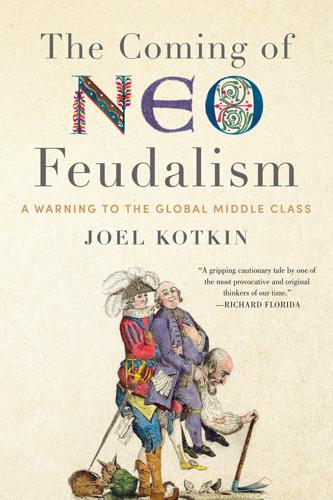
The Coming of Neo-Feudalism: A Warning to the Global Middle Class
by
Joel Kotkin
Published 11 May 2020
Many other moguls likewise brought their wealth to the city that the Beards called “the most powerful center of accumulation,” and lived gloriously insulated from the poverty around them.16 Globally, today’s billionaires now cluster in a handful of cities led by New York but also including San Francisco, Moscow, Tokyo, Shanghai, Mumbai, Beijing, Singapore, London, and Paris. Fifteen cities together hold roughly 11 percent of the planet’s total wealth.17 These “superstar cities” are becoming more bifurcated, with oligarchs and the upper clerisy living in the gentrified urban core, surrounded by propertyless and often impoverished masses on the periphery.18 The elite urban cores constitute only a small percentage of the metropolitan area both in the United States and in Europe.
…
Home of the Cockney and postwar socialism, London is no longer a city of aspiration for the working and middle classes; it now exists mainly for investors, their student offspring, and highly educated professionals who are taking over the traditional blue-collar areas like Hackney.32 Today only three of the city’s thirty-two boroughs are affordable for people of median income. While many of the world’s richest people live in London, four of its boroughs rank among the twenty poorest in England, and 27 percent of the city’s population live in poverty.33 London’s polarized economic landscape is typical of “superstar” cities. Other leading cities of Europe—Oslo, Amsterdam, Athens, Budapest, Madrid, Oslo, Prague, Riga, Stockholm, Tallinn, Vienna, Vilnius—also suffer widening gaps between the top and the bottom of the social hierarchy.34 Heavy immigration from developing countries, or from less wealthy parts of Europe, has exacerbated urban polarization.
…
Drezner, “ ‘Connectography’ by Parag Khanna,” New York Times, May 1, 2016, https://www.nytimes.com/2016/05/01/books/review/connectography-by-parag-khanna.html?_r=0; Simon Curtis, “What Comes After the End of the Global City?” De Gruyter Conversations, April 17, 2018, https://blog.degruyter.com/what-comes-after-the-end-of-the-global-city/; Joseph Gyourko et al., “Superstar Cities,” National Bureau of Economic Research, July 2006, https://www.nber.org/papers/w12355. 19 Wendell Cox, “Paris, London Lead European Metropolitan Areas: Latest Data,” New Geography, July 10, 2019, http://www.newgeography.com/content/006349-paris-london-lead-european-metropolitan-areas-latest-data; Christophe Guilluy, Twilight of the Elites: Prosperity, the Periphery, and the Future of France, trans.
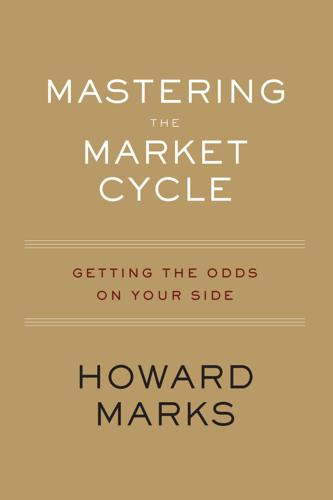
Mastering the Market Cycle: Getting the Odds on Your Side
by
Howard Marks
Published 30 Sep 2018
It even quoted him as saying, “We sometimes wonder why home prices haven’t increased much more, given the tremendous increase in the size of mortgage the average family can finance.” The article also mentioned “like-minded experts [from Columbia University and the Wharton School] who focus on what they call ‘superstar cities,’ places so desirable that they not only are not headed for a correction but they also can sustain ‘ever-increasing’ prices compared with less-sought-after cities.” (Of course, willingness to employ terms like “ever-increasing” should serve as an absolute red flag for the alert investor.) But there was a lot to question regarding the reasonableness of these conclusions: the brevity of the data on home prices, the fact that statements made about the trend in the price of the average home sold in a given year don’t necessarily say anything about the price performance of a given home or of all homes standing (e.g., there is no adjustment for physical changes in the average house over time, or in the mix of homes sold that year relative to all homes), and likewise, there is no adjustment for the fact that neighborhoods and whole cities go in and out of favor over time, affecting the value of homes.
…
Thus the article provided insight not as to whether the price of the average home had risen, but how the price of a particular home had performed. In contrast to the long-term optimists on housing quoted earlier, Yale’s Robert Shiller said of the Fransz house and its neighbors, “Looking at the Herengracht data is very instructive, because you can see 50-year intervals of growth, then it turns around. That’s more realistic than the superstar-cities argument.” The author of the study, Piet Eichholtz, was described as being “skeptical of those who claim that property values can continue to increase ad infinitum.” He considered the economic arguments for it being “different this time” but said, “you can see similarly rosy assessments made over and over, which are then quashed by circumstances.”
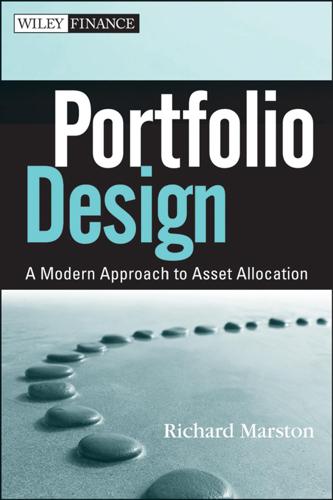
Portfolio Design: A Modern Approach to Asset Allocation
by
R. Marston
Published 29 Mar 2011
P1: a/b c11 P2: c/d QC: e/f JWBT412-Marston T1: g December 20, 2010 17:3 Printer: Courier Westford 225 Real Assets—Real Estate TABLE 11.6 Real House Appreciation in 12 Largest Cities 1978 Q1–2009 Q4 New York Los Angeles Chicago Dallas Philadelphia Houston Miami Washington Atlanta Detroit Boston San Francisco 2000 Q1–2009 Q4 Geometric Average Cumulative Return Geometric Average Cumulative Return 3.1% 2.1% 0.5% −0.2% 1.4% −0.7% 1.1% 1.6% 0.2% −0.4% 3.1% 2.8% 163.5% 93.6% 17.8% −6.8% 56.7% −21.4% 42.4% 68.3% 6.3% −12.7% 163.8% 145.2% 4.5% 4.4% 1.4% 0.6% 3.6% 2.1% 3.2% 4.4% 0.1% −3.5% 3.5% 3.9% 55.8% 54.1% 14.4% 6.3% 41.8% 22.5% 36.6% 53.4% 0.8% −30.2% 40.4% 46.9% Cities are ranked by size of metropolitan statistical areas. Housing data are from the FHFA. CPI data are from the IMF, International Financial Statistics. Why are the rates of house appreciation so varied? An interesting paper by Gyourko, Mayer, and Sinai (2006) entitled Superstar Cities focuses on two key factors. For house prices to rise rapidly, there must be substantial growth of population in the area, and that requires substantial job growth. But that alone is not enough, since a city like Atlanta has surely seen a lot of growth. In addition, a city (or, more accurately, metropolitan area) must impose limits on land use.
…
Greenwich Associates, 2009, Greenwich Investment Report. Gyourko, Joseph, and Donald B. Keim, 1993, “Risk and Return in Real Estate: Evidence from a Real Estate Stock Index,” Financial Analyst Journal (September/ October), pp. 39–46. Gyourko, Joseph, Christopher Mayer, and Todd Sinai, 2006, “Superstar Cities,” working paper. Harvard Management Company Endowment Report, 2009, “Message from the CEO”, September. He, Guangliang, and Robert Litterman, 1999, “The Intuition Behind BlackLitterman Model Portfolios,” Goldman Sachs Investment Management Division. Hennessee Group LLC, 2007, “Sources of Hedge Fund Capital,” The 2007 Manager Survey.

Evicted: Poverty and Profit in the American City
by
Matthew Desmond
Published 1 Mar 2016
In 1960, roughly one-third of the planet lived in urban areas; today, more than half does. Cities have experienced real income gains that have brought about global poverty reductions. But therein lies the rub, for the growth of cities also has been accompanied by an astonishing surge in land values and housing costs. Urban housing costs have risen around the globe, especially in “superstar cities” whose real-estate markets have experienced an influx of global capital, driving housing prices upward and crowding out low-income residents. In Lagos, Africa’s largest city, an estimated 60 percent of all residents dedicate the majority of their monthly income to rent, even as the majority of the city’s residents live in one-room dwellings.
…
By 2025, based on migration trends and global income projections, that number is expected to climb to 440 million households, representing 1.6 billion people. The world is becoming urbanized, and the city is becoming unaffordable to millions everywhere. See Joseph Gyourko, Christopher Mayer, and Todd Sinai, “Superstar Cities,” American Economic Journal: Economic Policy 5 (2013): 167–99; McKinsey Global Institute, A Blueprint for Addressing the Global Affordable Housing Challenge (New York: McKinsey, 2014); Pedro Olinto and Hiroki Uematsu, The State of the Poor: Where Are the Poor and Where Are They Poorest? (Washington, DC: World Bank, Poverty Reduction and Equity, 2013). 35.
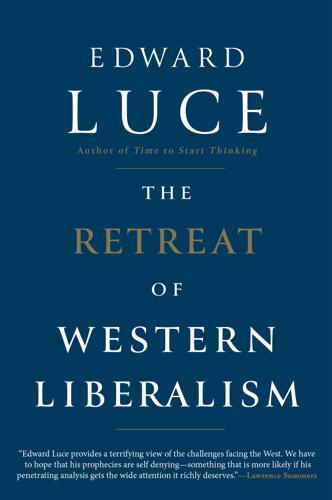
The Retreat of Western Liberalism
by
Edward Luce
Published 20 Apr 2017
Rather than being shaped by those who live there full-time, the characters of our biggest cities are increasingly driven by the global super-rich as a place to park their money. Many of the creative classes are being edged out. Urban downtowns have turned into ‘deadened trophy districts’. New York’s once-bohemian SoHo is now better known for its high-end boutiques than its artists’ studios. SoHo could nowadays be found in any big city in the world. ‘Superstar cities and tech hubs will become so expensive that they will turn into gilded and gated communities,’ Florida predicts.51 ‘Their innovative and creative sparks will eventually fade.’ Karl Marx was wrong: it is the rich who are losing their nation, not the proletariat. The gap between global cities and their national anchors is already a metaphor for our times.
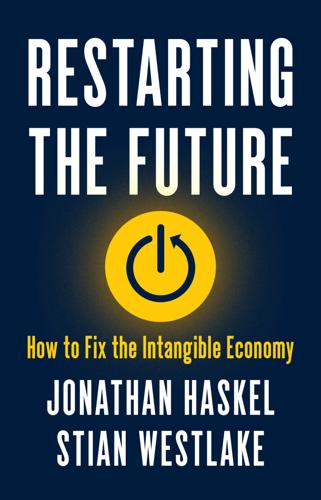
Restarting the Future: How to Fix the Intangible Economy
by
Jonathan Haskel
and
Stian Westlake
Published 4 Apr 2022
In particular, rising housing costs are increasingly eating up the productivity benefits of big cities.10 As a result, the higher productivity that firms enjoy from being in thriving cities is less likely to translate into higher profits or higher disposable income for workers, because housing costs increase to consume the difference. It is worth stressing that this constraint is not a natural limit. The world’s superstar cities, from London to San Francisco to Shanghai, have a lot of space and could be much denser. Rather, it’s a function of poor institutions, specifically outdated rules for planning and land use, that were devised not to maximise agglomeration effects but rather to prevent new development in cities by moving people to new exurban settlements.
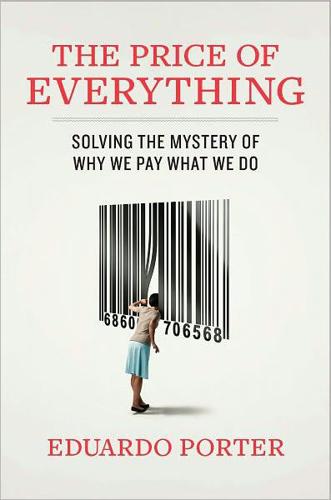
The Price of Everything: And the Hidden Logic of Value
by
Eduardo Porter
Published 4 Jan 2011
Income Distribution and Poverty in OECD Countries (OECD Publishing, October 2008), pp. 77-92. Data on the impact of income inequality on health and segregation are drawn from Richard Wilkinson and Kate Pickett, The Spirit Level: Why More Equal Societies Almost Always Do Better (New York: Bloomsbury Press, 2010); and Joseph Gyourko, Christopher Mayer, and Todd Sinai, “Superstar Cities,” NBER Working Paper, July 2006. 125-127 The Vanishing Middle: The discussion of the impact of education on income growth draws from Claudia Goldin and Lawrence Katz, The Race Between Education and Technology (Cambridge, Mass.: Belknap Press of Harvard University Press, 2008); David Autor and David Dorn, “Inequality and Specialization: The Growth of Low-Skill Service Jobs in the United States,” NBER working paper, November 2008; Congressional Budget Office, “Changes in the Distribution of Workers’ Annual Earnings Between 1979 and 2007,” October 2009; Francine Blau, Marianne Ferber, and Anne Winkler, The Economics of Women, Men and Work, 5th edition (Upper Saddle River, N.J.: Pearson Prentice Hall, 2006); Bureau of Labor Statistics (www.bls.gov/news.release/wkyeng.t05.htm, accessed 08/08/2010); Census Bureau, “Income, Poverty, and Health Insurance Coverage in the United States,” 2008 (www.census.gov/prod/2009pubs/p60-236.pdf, accessed 08/09/2010); Bureau of Labor Statistics, “100 Years of U.S.
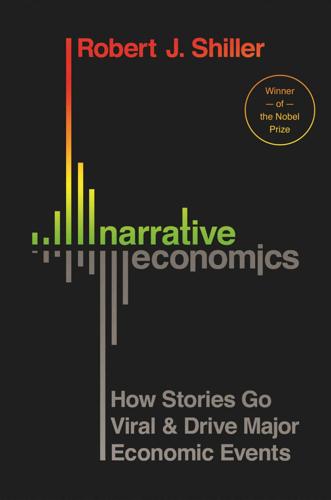
Narrative Economics: How Stories Go Viral and Drive Major Economic Events
by
Robert J. Shiller
Published 14 Oct 2019
“Youth Unemployment and Crime: New Lessons Exploring Longitudinal Register Data,” https://www.sole-jole.org/12129.pdf. Grossman, Sanford J., and Robert J. Shiller. 1981. “Determinants of the Variability of Stock Market Prices.” American Economic Review 71(2):221–27. Gyourko, Joseph, Christopher Mayer, and Todd Sinai. 2013. “Superstar Cities.” American Economic Journal: Economic Policy 5(4):167–99. Hacker, Jacob S., and Paul Pierson. 2016. American Amnesia: How the War on Government Led Us to Forget What Made America Prosper. New York: Simon and Schuster. Halbwachs, Maurice. 1925. “Les cadres sociaux de la mémoire.” In Les travaux de l’année Sociologique.

The Third Pillar: How Markets and the State Leave the Community Behind
by
Raghuram Rajan
Published 26 Feb 2019
This would explain why some regions like Silicon Valley or cities like London, New York, or San Francisco become magnets for the capable and talented, where they meet one another and become yet more successful. My colleague Chang-Tai Hsieh and Enrico Moretti from Berkeley estimate that the dispersion in wages across US cities in 2009 was twice as large as in 1964, in part because of the emergence of superstar cities like New York, San Francisco, and San Jose.10 They argue that simply reducing the stringent zoning regulations in New York, San Jose, and San Francisco to that of the median US city, and thus allowing freer worker movement into those cities with a red-hot job market, would have increased GDP per US worker by an additional $3,685 in 2009.

Generations: The Real Differences Between Gen Z, Millennials, Gen X, Boomers, and Silents—and What They Mean for America's Future
by
Jean M. Twenge
Published 25 Apr 2023
Recent college graduate Sam Purdy says: Danielle Abril, “Gen Z Workers Demand Flexibility, Don’t Want to Be Stuffed in a Cubicle,” Washington Post, August 11, 2022. When David Gross (b. 1981) announced to his advertising agency employees in 2021: Nelson D. Schwartz and Coral Murphy Marcos, “Return to Office Hits a Snag: Young Resisters,” New York Times, July 26, 2021. Atlantic writer Derek Thompson calls the digital commute: Derek Thompson, “Superstar Cities Are in Trouble,” Atlantic, February 1, 2021. “Goal for today—500 calls?! We’re doing 50”: Matt Pearce, “Gen Z Didn’t Coin ‘Quiet Quitting’—Gen X Did,” Los Angeles Times, August 27, 2022. Even the term quiet quitting was coined by a Gen X’er: Pearce, “ ‘Quiet Quitting.’ ” Millennial Polly Rodriguez, whose company sells vibrators: Goldberg, “37-Year-Olds Are Afraid.”
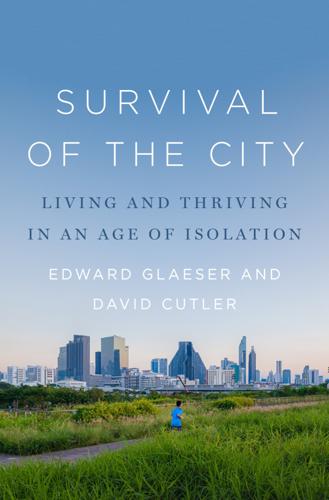
The Survival of the City: Human Flourishing in an Age of Isolation
by
Edward Glaeser
and
David Cutler
Published 14 Sep 2021
David Autor of MIT found that in 1970, an urbanite with a high school diploma or less did substantially better than his nonurban equivalent, and that was roughly true everywhere, from Detroit to Dallas. By 2020, the urban wage premium was gone in less-educated cities, and since that was where less-educated workers typically lived, they earned no more than in rural America. The more-educated “superstar” cities, like New York, Boston, and Seattle, reinvented themselves as capitals of the information age—at least until the COVID-19 pandemic. Wages are higher there for everyone, even for low-income workers. Wages of rich and poor alike increase with the education of people around them, and that fact is particularly true in the developing world.

Southeast Asia on a Shoestring Travel Guide
by
Lonely Planet
Published 30 May 2012
Siem Reap is the base to explore this collection of temples and is a buzzing destination with superb restaurants and bars. Beyond the temples are cultural attractions, such as floating villages and cooking classes. ANDERS BLOMQVIST / LONELY PLANET IMAGES © Bangkok (Thailand) 3 Southeast Asia’s superstar city (Click here) has it all in supersized proportions: food, shopping, fun and then some… It might be a pressure cooker for new arrivals but it will be a needed dose of civilisation after weeks of dusty back roads. Build in plenty of time to load up on souvenirs, refresh your wardrobe, be plucked and kneaded and recount tall tales over a sweaty bottle of beer.